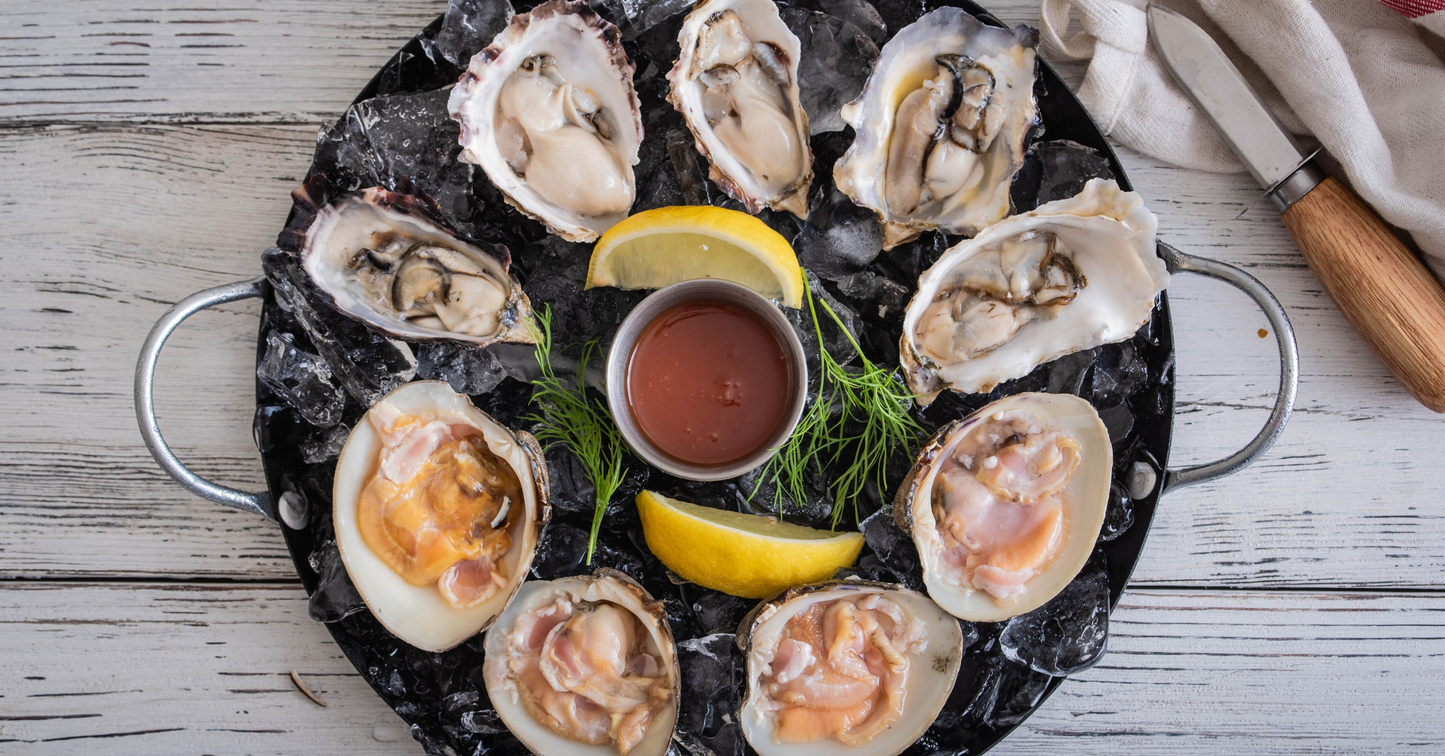
Clams and oysters are two of the most popular shellfish around.
As bivalve mollusks, they share some similarities but also have distinct differences in appearance, taste, nutrition, and how they are eaten.
Which one is the best choice for your next dinner party?
In this article, we'll explore everything you need to know about clams and oysters so you can have the delectable experience you are searching for!
Let's Discuss Clams
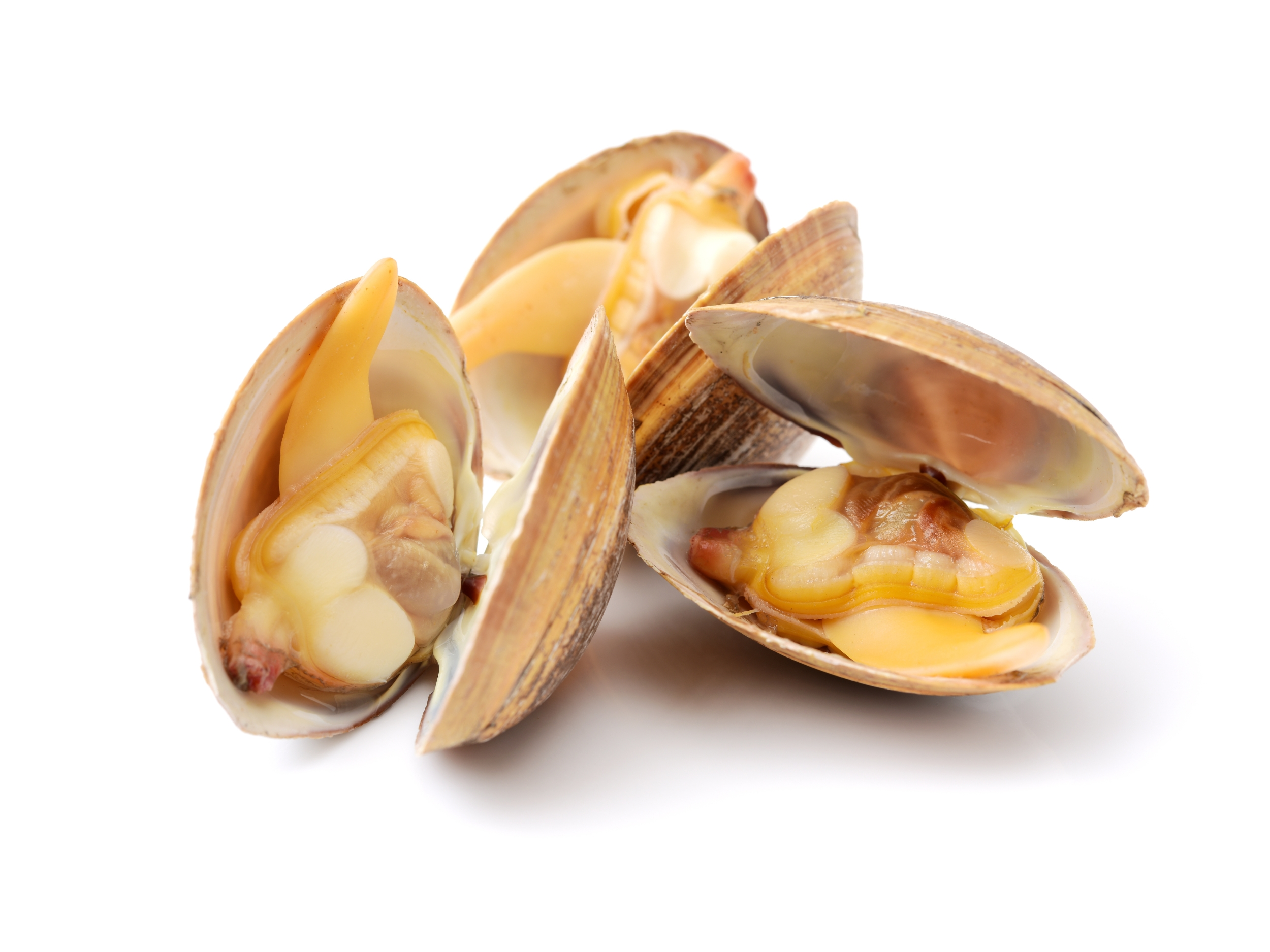
Clams are bivalve mollusks that live in saltwater and freshwater environments buried in sand or mud. There are over 15,000 species, with some of the most popular being quahogs, geoducks, and soft-shell clams. They have thick oval or round shells consisting of two valve-shaped parts held together by an elastic hinge.
Learning More About Oysters
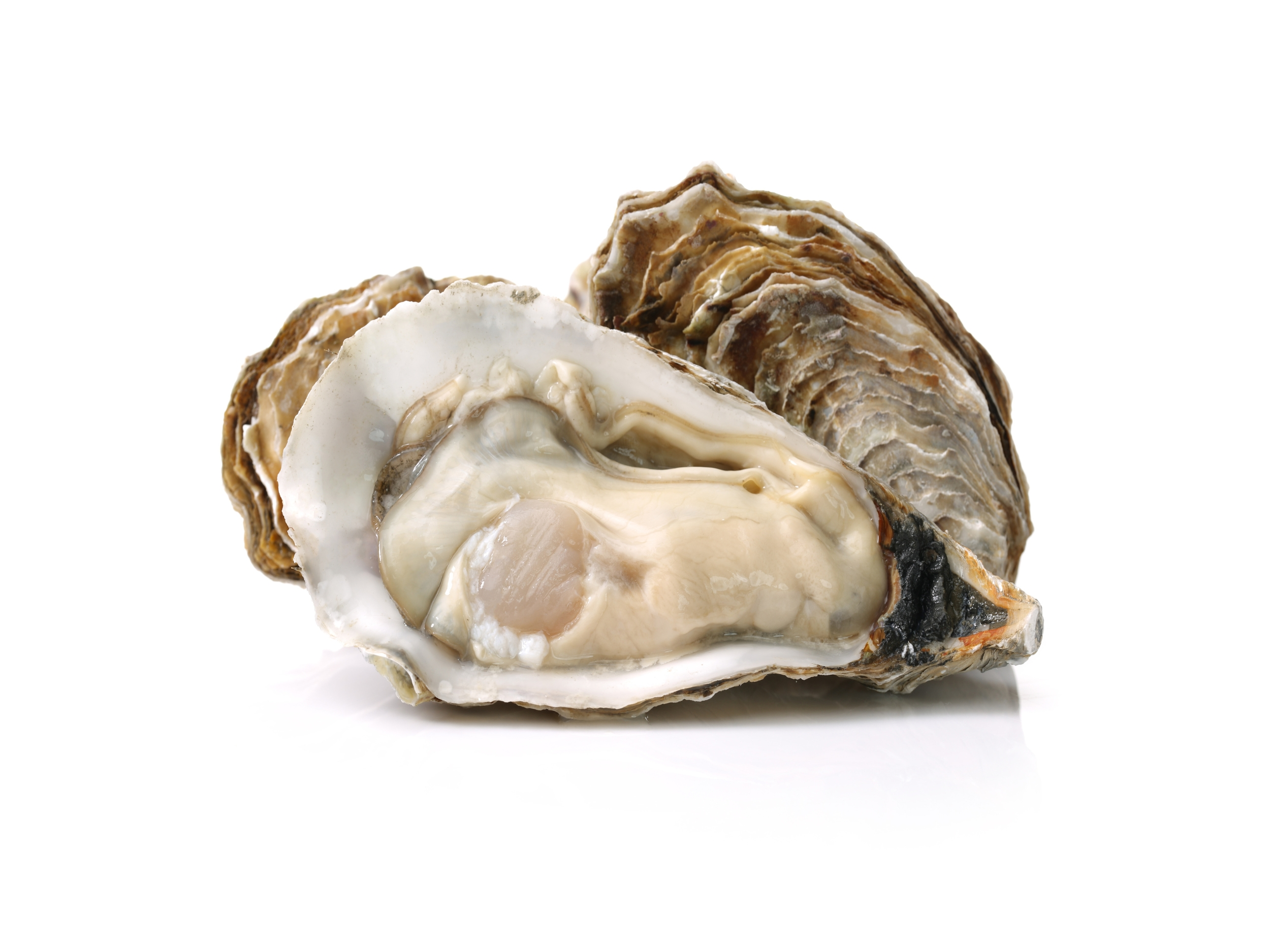
Oysters are found in coastal saltwater habitats around the world. There are several varieties of oysters, including, Pacific oysters, Eastern, and European flat oysters. Oysters have an irregularly shaped shell with one valve cupping the other, and their rough-textured shells are generally gray, white, or brown in color.
Key Differences Between Clams and Oysters
While these share some biological traits, there are several key differences between these two when it comes to anatomy, habitat, taste, and more.
Appearance and Anatomy
The shells of clams are thicker, more rounded, and the same size on both sides. Oyster shells are more irregularly shaped, with one shell cupping the other. Oysters also have a rougher, harder shell texture compared to the smooth exterior of clam shells.
Habitat and Cultivation
Clams and oysters thrive in different habitats. Clams live buried in sand or mud in both saltwater and freshwater environments. They are found in intertidal and subtidal zones of bays, estuaries, and rivers. Clams prefer calmer waters that are not too salty.
Oysters grow on the seabed or are cultivated in systems suspended off the bottom in saltwater bays and estuaries. They attach to a hard surface like a rock or another oyster shell. Oysters tolerate a wider range of salinities than clams. They are raised commercially through various aquaculture techniques like racks, floating cages, and long lines.
Flavor Profile and Culinary Uses
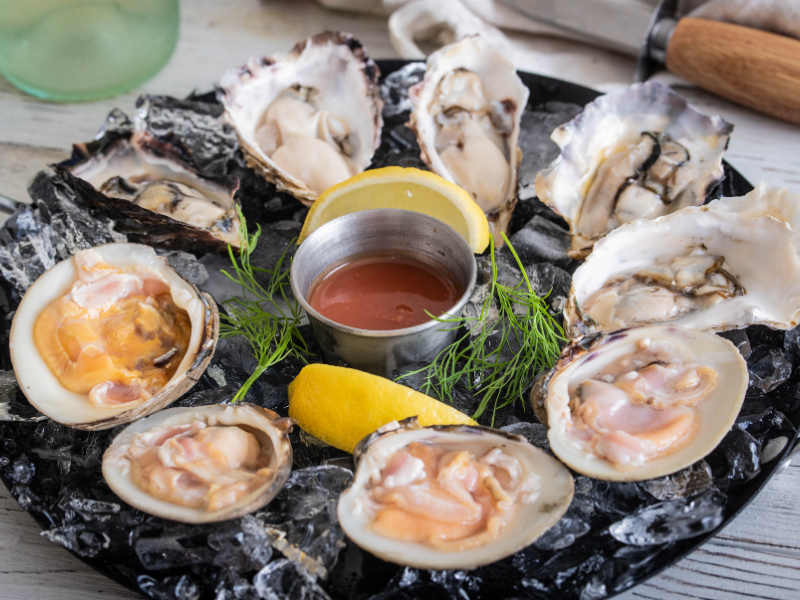
Clams and oysters also differ in their taste and culinary uses. Clams tend to have a mild, sweet, and briny flavor, while their meat tends to be soft and lean. They also work well in chowders, pasta, fried dishes, and more.
Oysters have a much stronger briny, salty taste. Their flavor can range from sweet to creamy depending on the variety and season. They have a firmer, meatier texture. Oysters are often consumed raw on the shell with mignonette sauce. They are also smoked, stewed, roasted, or added to stuffing.
White Stone Oysters: A Closer Look
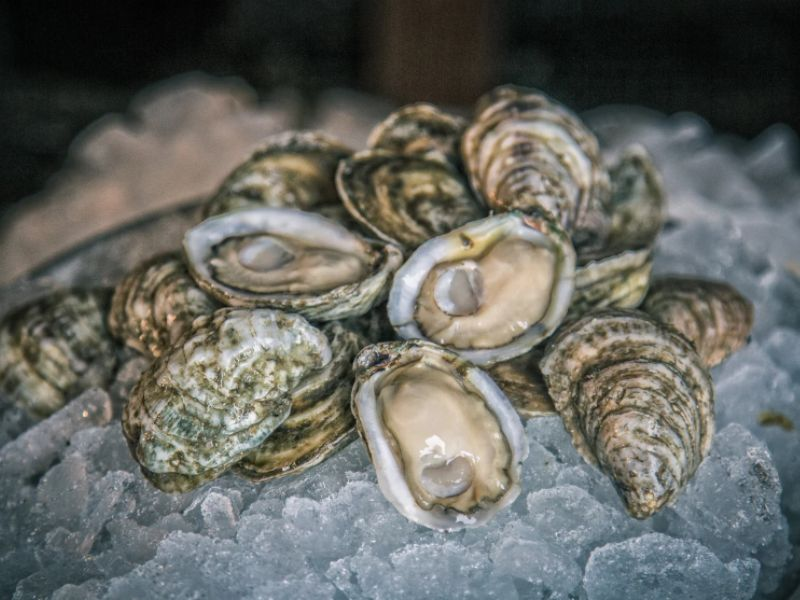
At White Stone Oysters, we use an innovative aquaculture method to produce quality oysters sustainably. Our floating cages allow oysters to move at the water's surface for optimal feeding and growth. This also benefits the surrounding ecosystem. White Stone Oysters have a delicious mild, buttery flavor with hints of saltwater. We offer fresh oysters for delivery across the US as well as value-added products like party kits!
Clams vs Oysters FAQ
Are oysters healthier than clams?
Both are nutritious, but oysters contain higher levels of certain vitamins and minerals that are good for health. When you eat raw oysters, you're getting more zinc (per serving) than any other food, which benefits the immune system and reproductive health. They also provide more vitamin B12, potassium, and magnesium. Clams typically contain higher amounts of iron and vitamin C. Overall, oysters have slightly higher nutritional value.
Can I substitute clams for oysters in a recipe?
In most cases, clams and oysters cannot directly substitute for one another in recipes. The different flavor profiles and textures mean swapping clams for oysters or vice versa will change the dish. Oysters tend to be saltier and chewier than the sweeter, more tender clams. Intended use matters too - raw oysters on the half shell cannot be replaced with raw clams. It's best to use the specific mollusk recommended for ideal results. Adjusting quantity may be needed since oysters are often larger. People with shellfish allergies should be aware, as both can cause allergic reactions.
How are clams and oysters harvested?
Clams are typically raked or dug from tidal flats where they live buried in the sand or mud. Oysters are gathered by hand or with tongs/rakes from natural reefs in shallow waters. Farmed oysters are grown on specialized systems and lifted out at harvest time. Divers may harvest both types in deeper waters. Harvesting bivalve mollusks are regulated for sustainability with size limits, seasons, and quotas. Proper cold handling after harvesting is crucial to retain freshness as their shells slowly open.
Final Thoughts: Clams or Oysters, Which is Right for You?
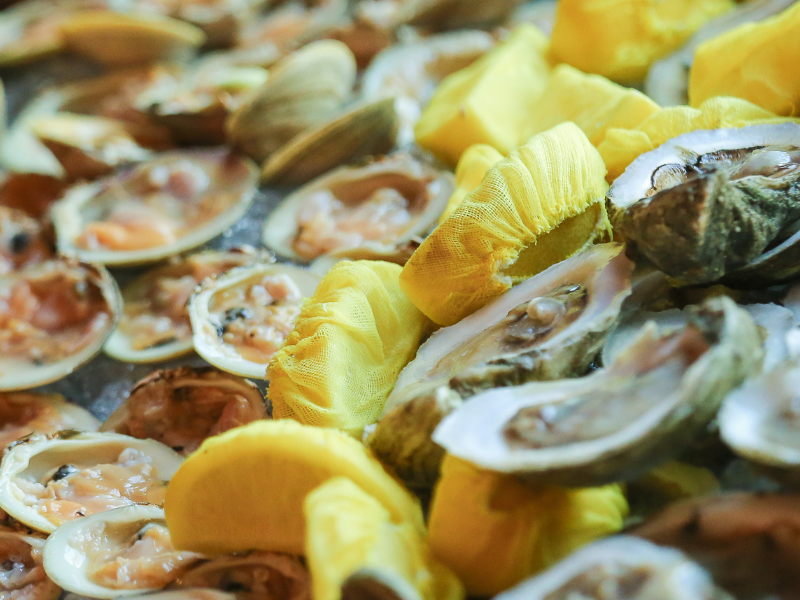
Choosing clams or oysters comes down to personal taste.
Oysters offer robust flavors and meaty texture and can be eaten raw or cooked. Clams have a mild sweetness and tender chew, complementing other ingredients in dishes like clam chowder. Both provide good nutrition, but most prefer oysters from White Stone Oysters due to their undeniable quality and freshness. People with shellfish allergies need caution with both, though cooking may reduce reactions. It depends on your taste preferences whether you want clam dishes or raw oysters on a given day.
← Older post Newer post →
